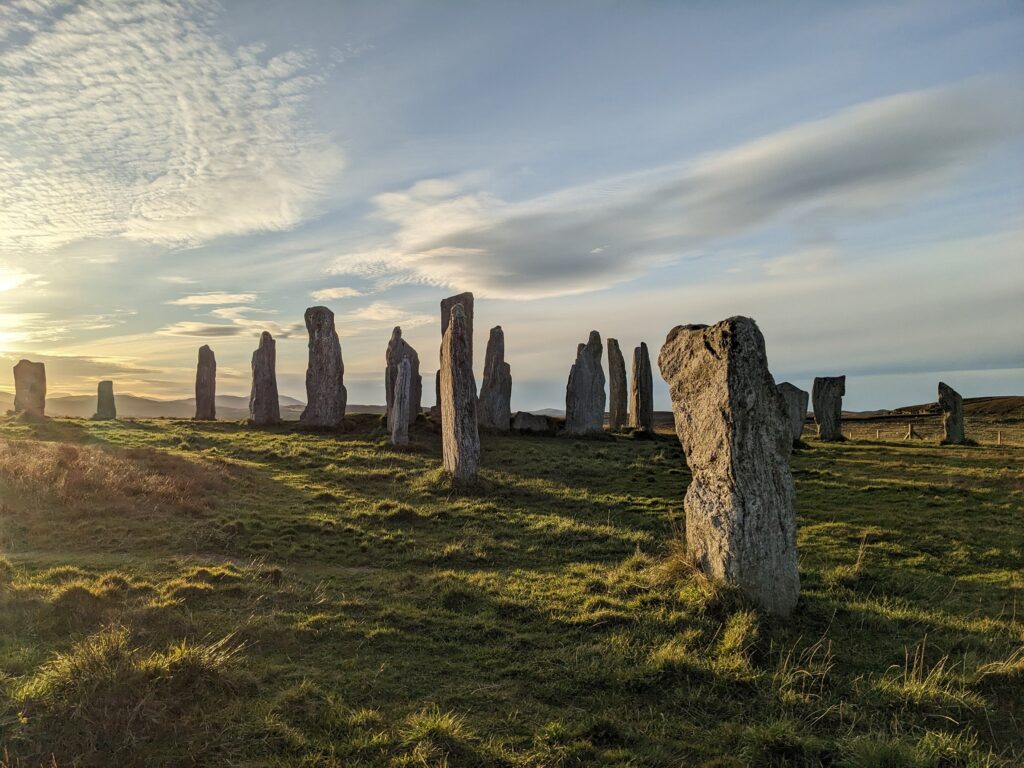NEW visitor monitoring sensors are helping hospitality and tourism businesses on The Isle of Lewis.
The internet-connected sensors are helping businesses to understand patterns in visitor numbers and predict busy periods, with a pilot system now installed at the Calanais Stones.
The technology has been developed by CENSIS – Scotland’s innovation centre for sensing, imaging, and Internet of Things (IoT) technologies – in partnership with Highlands and Islands Enterprise area team on Lewis, the HIE Innovation team and the Outer Hebrides Cruise Forum.

Ahead of an anticipated growth in cruise tourism in 2024, the team at Calanais has turned to technology to help monitor busy periods that have a knock-on impact on other businesses in the community such as shops and cafes.
Starting with the standing stones – with a view to expanding the technology to cover other popular areas and attractions – IoT sensors have been installed to better manage busy periods.
The sensors collect information about the number of people attending the site at one time, allowing patterns to be identified.
Data collected is then displayed via an app-based dashboard where the Calanais team can monitor numbers in real-time.
If the data dashboard shows the site is particularly busy as soon as visitors arrive on Lewis, for example, they could be advised to visit the attraction at a quieter point of the day.
A £60m deep water terminal set for completion next year will boost tourism in the islands – with the new infrastructure enabling larger cruise ships to berth in the Stornoway port.
The Outer Hebrides Cruise Forum was established to help communities maximise the economic opportunity, including the introduction of new technology.
Mark Davies, project manager of the Calanais 2025 project said: “The Calanais Stones are a must-see for visitors to the island and while the site has coped with large visitor numbers, car parking is often limited.
“We have an opportunity to better manage the peaks and troughs throughout the day.
“Visitors to the Islands bring fantastic opportunities for the local community and businesses, but it is important that we ensure they have the best possible experience while here and we have the infrastructure and capacity to make their visit memorable.”
Ally Longmuir, business development manager at CENSIS, said: “The aim of this project is to help the Calanais team gain a better understanding of visitor numbers at one of its most popular attractions, enabling businesses to plan ahead for staffing, stock and opening hours.
“This technology can provide accurate real-time data that will undoubtedly support the booming tourism industry in the islands, and we’ve seen success from similar initiatives in the past involving sites on the West Highland Way.
“We hope to expand the initiative to cover additional sites that will paint a more detailed picture of how visitors are interacting with the Islands key heritage sites.”
John Mackenzie, senior development manager innovation HIE said: “This is a great example of a technology driven innovation project in the tourism sector adopting a data driven approach.
“Understanding and managing visitor numbers to enable strategies to be developed to maintain the quality of the visitor experience whilst managing infrastructure capabilities across the island and taking into consideration environmental factors.
“This is a great example of IOT, sensing and data being used to help achieve a specific output.”
